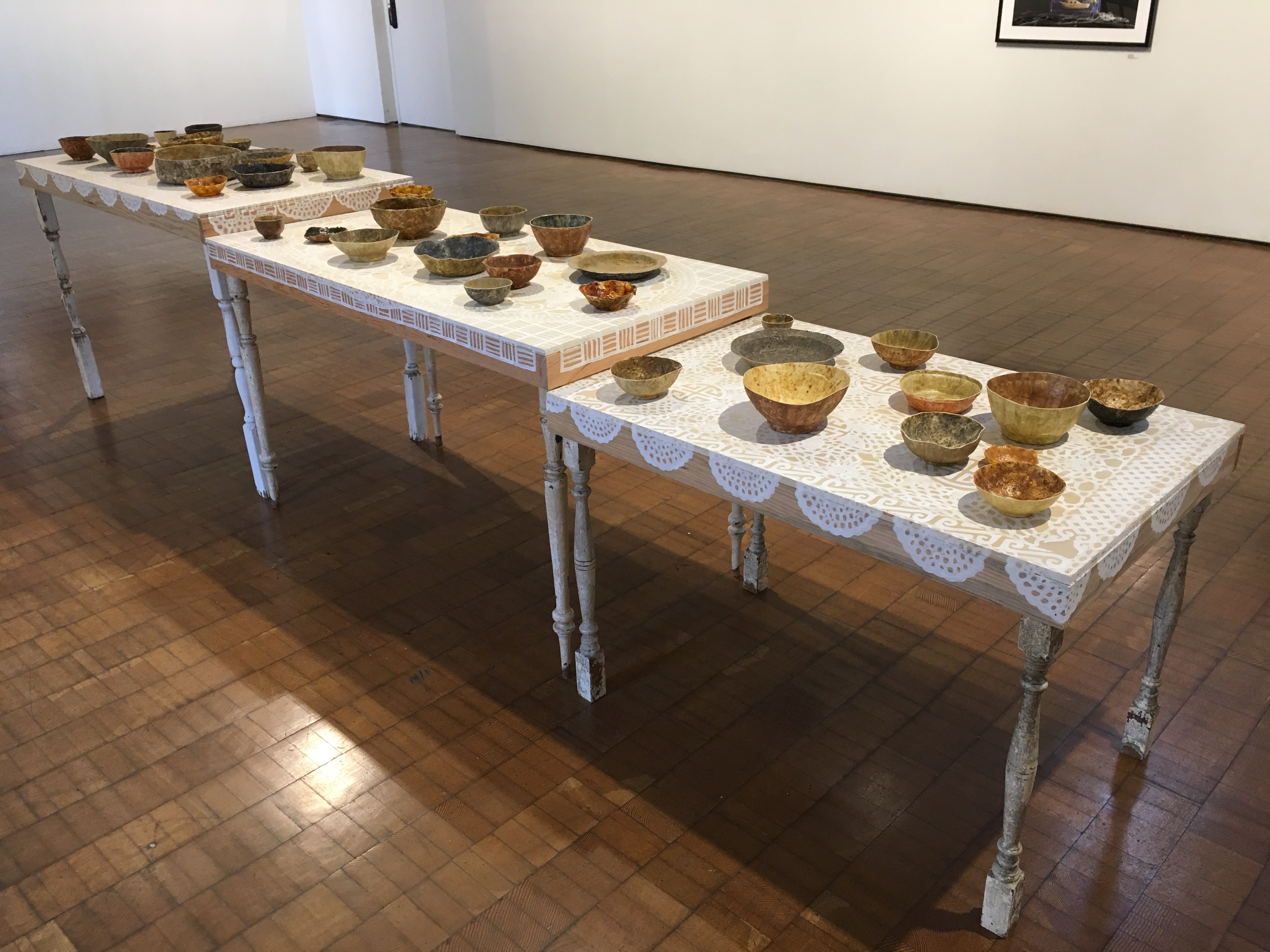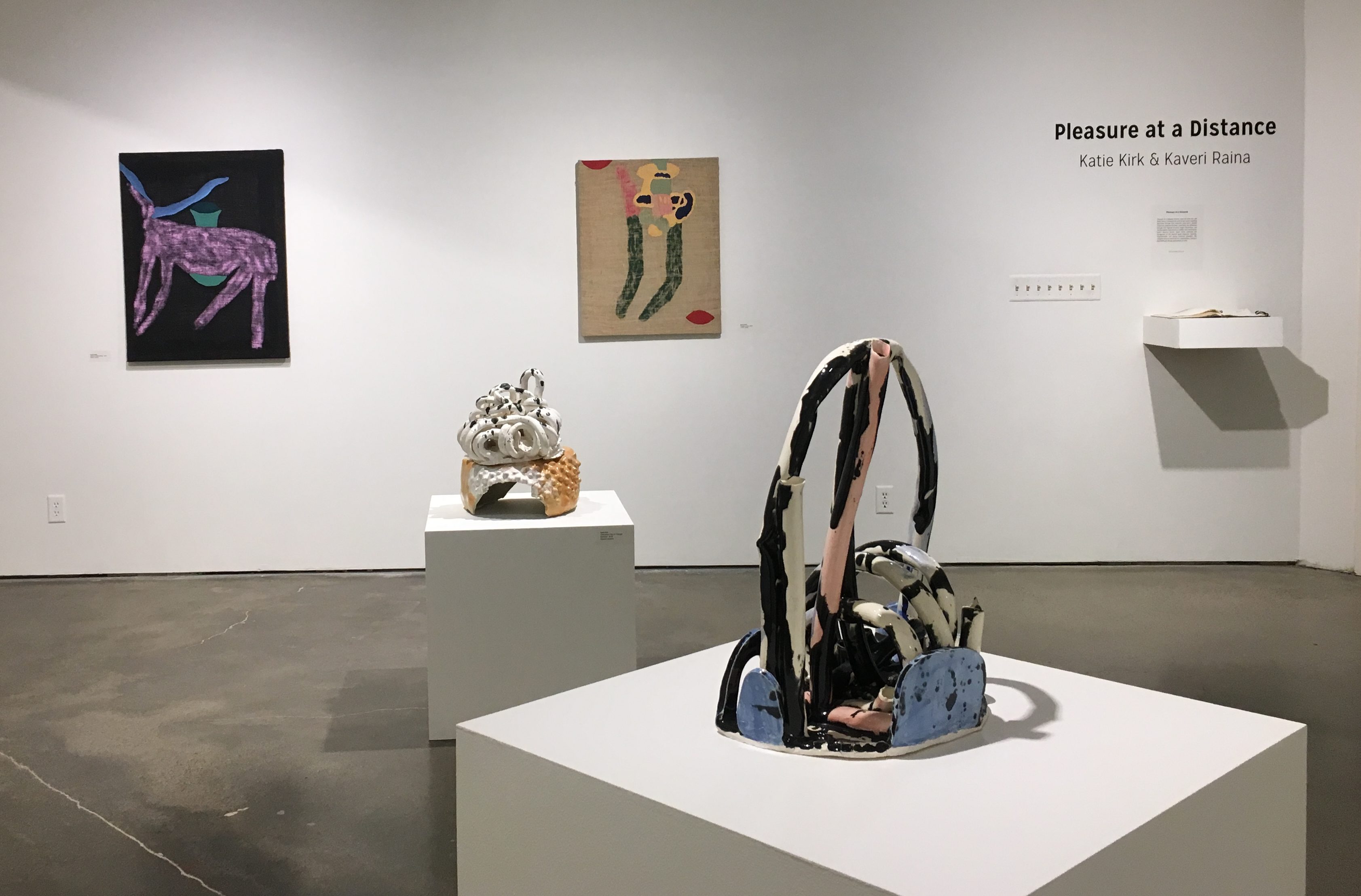Throughout the life of an individual, the balancing act of acceptance and surrender can be difficult to navigate. For women especially, aging is a very trying experience – with motherhood changing your body, your time commitments and your perspective; and, watching yourself get further and further from society’s acceptable standards of beautiful, getting older is a complex thing. However, currently on view at Irvine Fine Arts Center is an exhibition that dives head first into the deep and difficult aspects of aging and growing old, specifically having to do with familial relationships. Three female artists approach the process of aging from three very different vantage points and through three very intriguing and insightful lenses.
Ching Ching Cheng, Juliana Rico and Jane Szabo utilize photography, video and installation work to explore this human experience of time and aging in “Re:balance.” Cheng explores motherhood and the physicality of her body and her environment in her creative and nuanced photography, video, installation and sculptures. Rico documents her grandmother and “Socorro” (the backbone and matriarch of the family) in her home and garden through photography, focusing on the last chapters of her life as an elderly woman who faces many health challenges and is no longer the glue of the family. Jane Szabo uses poignant photography to explore the interesting and poetic details of her parents’ belongings and life as she shifts from being simply their daughter to being their caretaker in their old age.

Photo by Evan Senn
Walking through the space your attention gets centered around the multi-tiered tables painted with lace patterns and mismatched legs, covered in fragile-looking bowls of all shapes and sizes. This set-up is reminiscent of the Mad Hatter’s tea party table, only instead of tea cups they are fragile bowls and instead of the Mad Hatter and Hare, there is no one standing by to greet you. This central installation introduces the mixed bag of playfulness and longing, and youthfulness and aging. As you look up from the table of bowls, Cheng’s photographs come forward with intense introspection and surreal composition.
Her photographs explore her relationship with her young children and the amount of herself she gives them through use of additional surreal props. Using exceedingly long aprons that turn into blankets that her children use as protection and comfort, these fabrics become an extension of her body, her life and her love. They walk, sleep and sit on these extensions in the photographs as Cheng looks on with quiet acceptance. It is difficult to tell whether Cheng is disappointed with how much of herself she has to give to her children or whether she longs for more distance from them as she has become synonymous with a piece of furniture in their lives. In either case, the complex and poignant relationship between mother and child is highlighted with simple and exquisite detail in Cheng’s photographs.
Cheng includes sculptures, video and installations within the same vein, farther back in the gallery. They touch on these new understandings of motherhood and the process of coping with the new role. Utilizing the apron as an artistic tool and conceptual symbol, Cheng explores the meaning, responsibility and design of the object to rethink what it means to be a new mother and how it makes her feel.

Photo by Evan Senn
Back in the front room of the gallery, on the opposite side of the table of bowls, Jane Szabo’s photographs seem to vibrate with energy and strength. Szabo’s photography uses objects gathered from her family home to tell the story of her role within her family and to confront issues about her family’s past and her parents’ last few chapters of life. The photographs are staged as classical still-lifes. Each object is carefully considered and staged in a kind of poetic placement with love, care and occasionally ironic whimsy. Adriftis a standout photo that showcases a wall-hanging sailboat where the sails are made out of pins and string, with the string coming down and knotting itself into a mess of chaos as it falls down off the composition. Burdenis also so perfectly poetic, as a metal fish-shaped object – perhaps a soap holder or stove-top ladle holder – is tied to a much larger rock. The way this photo is set up makes it seem like the fish is trying to tow the rock, but it is clear that the rock is much too large for the little fish to pull along. This “burden” echoes the struggle of a daughter trying to help her parents through a difficult stage in the last chapters of their lives. While they are unable to help themselves they become symbolically immovable like this rock.

Photo by Evan Senn
Juliana Rico’s photographs are further back in the space and also touch on the aging process but in a more subtle and personal way. Rico’s Abuela/Grandmother/Socorro is documented through quiet photographs, detailing her daily life in her old age. Roasting vegetables for salsa, chopping up nopales, gardening in her backyard and reading at her leisure in the home she’s lived in for over 50 years. What used to be the center of the family where people would meet for parties, meals and holidays is now the quiet and slow-paced home of an elderly woman living alone in the last stages of her life. The photographs do not show a sad environment, however. They show a serene old woman who is living her life in a home that is clearly still full of memories and energy and love. The light is calm and clear, the activities and Socorro are at peace in their space.
All three of these artists have created evocative expressions that touch on our nuanced experiences of accepting life and death while not muting their respective feelings on the subject, through their art. The exhibition lends to complex works that evoke a range of emotions and thoughts about how we as family members and as individuals process and experience the subtle changes of time.
“Re:balance” is on view through January 19, 2019, at Irvine Fine Arts Center, 14321 Yale Ave., Irvine, 92604.
Advertising disclosure: We may receive compensation for some of the links in our stories. Thank you for supporting Irvine Weekly and our advertisers.

